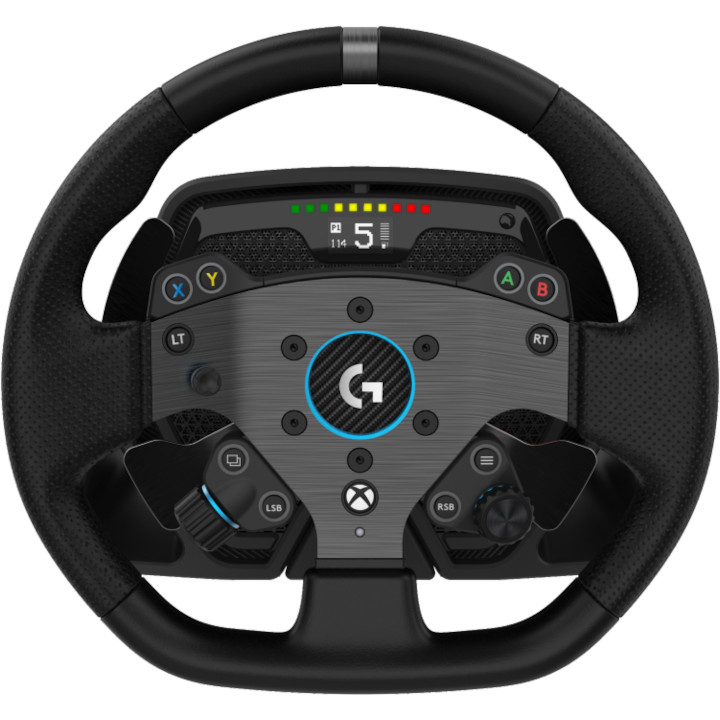Logitech is proud of its sim racing heritage and the risks it had to take with pricing and manufacturing in the earliest peripheral days. Logitech G wants the brand new PRO direct drive wheel and Trueforce to tackle the professional sim racing scene, focusing on testing from esports gamers, pro racing drivers, and scene enthusiasts.
Direct drive wheels are notoriously expensive but provide the most realistic experience. Offering a complete package with minimal setup could be a massive deal for budding enthusiasts and experienced sim racers. Logitech G sent over the PRO racing wheel and pedals, each worthy of independent reviews. I spent the weekend smashing virtual cars around to determine if the luxurious PRO wheel warrants the high asking price.
Logitech G PRO: Price and availability
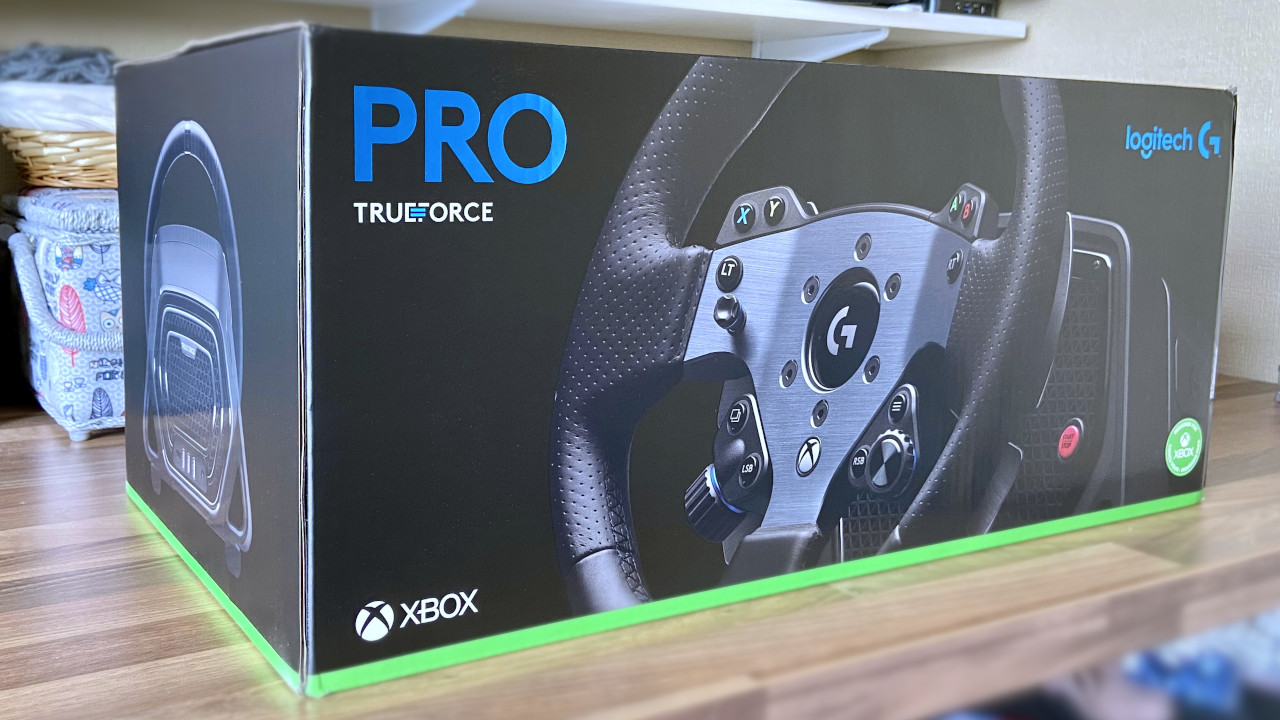
Logitech sells the PRO racing wheel exclusively through its official website for a $999 MSRP. Third-party options and brick-and-mortar stores are not initially planned for launch but may be available in the future.
Included in the box alongside the PRO wheel rim and base is a micro USB cable, power supply with an appropriate AC cord for your region, plastic table clamp, and user documentation.
A set of companion Logitech G PRO pedals are available for a $349 MSRP, specifically designed for use with the PRO wheel. An upcoming collaboration with cockpit manufacturer Playseat will also feature a G PRO variation of its Trophy rig, which Logitech G claims will be available soon for a $599 MSRP.
Logitech G PRO: What you’ll like
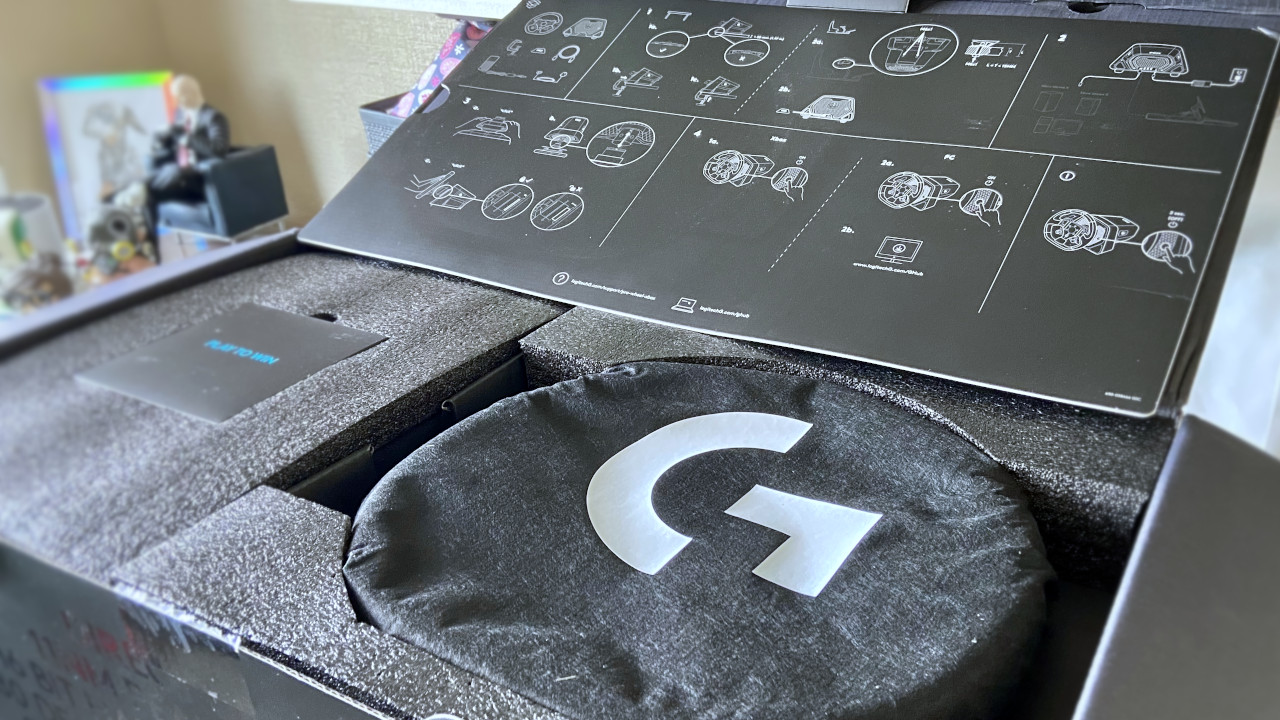
Considering this is a combination set and not a servo sold separately from a wheel, it makes sense to put some consideration into the packaging. Logitech G has put great care into the PRO wheel, with a beautiful presentation and extra-thick polystyrene surrounding the most valuable parts.
Both components come wrapped in cloth bags emblazoned with the iconic G logo. A gigantic diagram is included along the top, plus a cute little package with some stickers if you’re excited to show your Logitech admiration elsewhere. At first, I was slightly hesitant that the PRO wheel and pedals would perhaps be provided in a more barebones manner and require more of a DIY setup process.
Thankfully, the whole set feels approachable for anyone. If you’re springing for a direct drive wheel, it’s reasonable to assume you understand what you’re buying. Still, if you’re a beginner going all-in with your first wheel and want something high-end, Logitech G’s PRO wheel is immediately ticking all the right boxes.
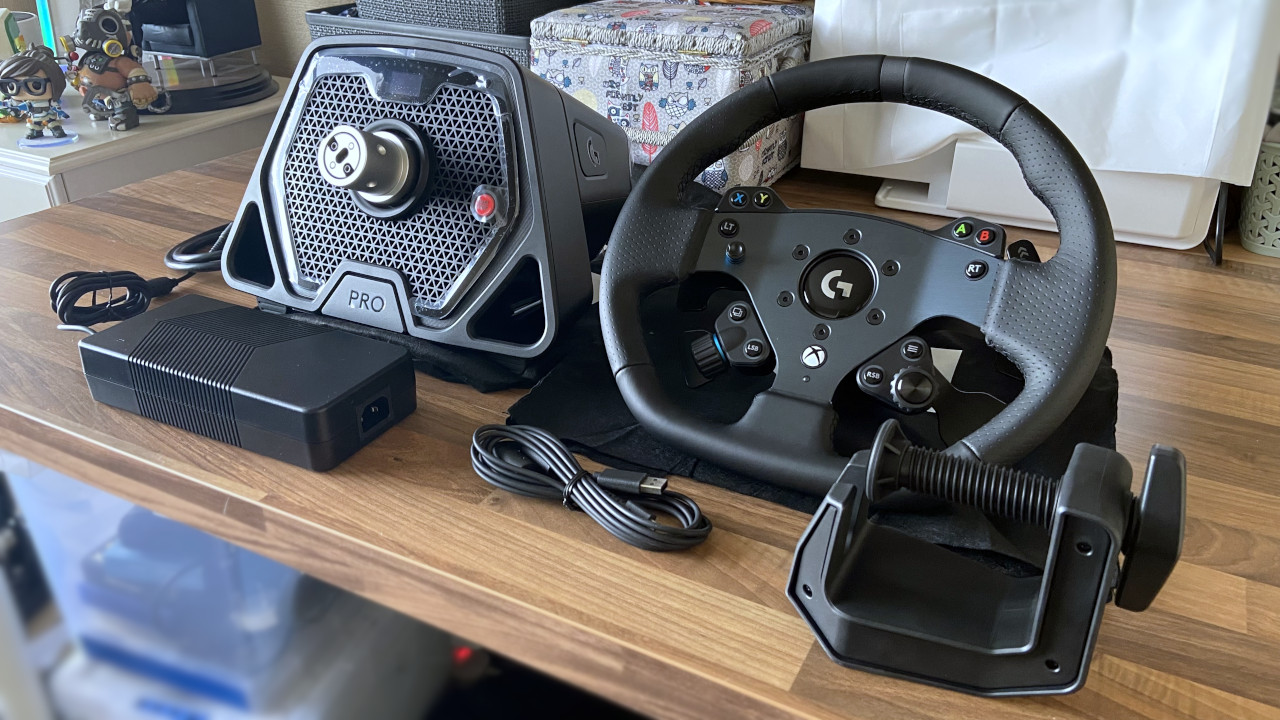
My first impressions were fantastic. Everything in the whole package looks sleek and simple to understand. The power brick is possibly the largest I’ve ever seen, but it will soon be out of sight. In the box, you’ll find a plastic table clamp, micro-USB cable, and AC cord alongside the brick, servo, and wheel.
The PRO wheel isn’t intended to replace any current Logitech wheels, with no changes planned to the current lineup.
Thanks to the clear diagram and a comprehensive setup video on an official YouTube channel, nothing is intimidating about getting started with this wheel.
The wheel has a fairly similar layout to the Logitech G923, but with dials shifted around and some adjustments to the leather styling and steel construction. The subtle aesthetic and mechanical improvements help it stand out as a higher-end model, and hardly anything feels out of place.
The PRO isn’t intended to replace any current Logitech racing wheels, with no changes planned to the current lineup. Logitech G’s promise of a premium product has undoubtedly been delivered so far, and now it’s time to dive into some of its unique features.
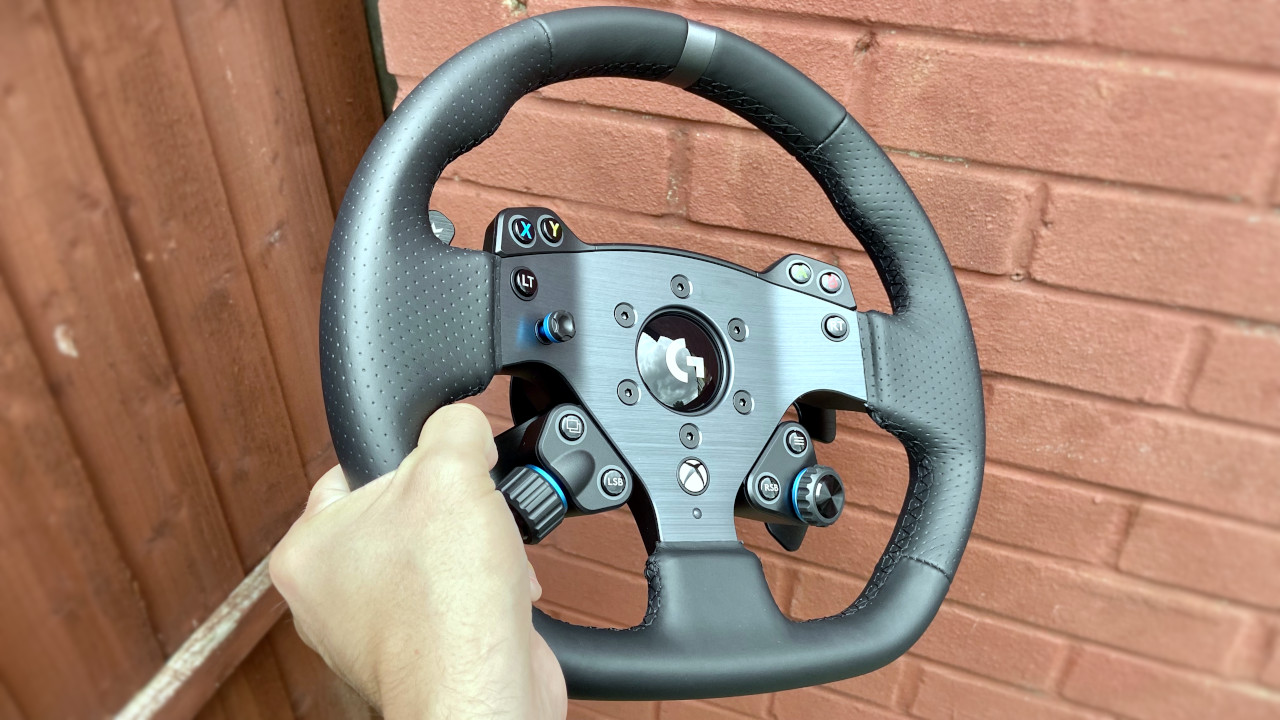
The direct drive servo is pretty heavy. Not significantly heavier than potential competitors, but it alone weighs 7.1kg, or 8.6kg when combined with the PRO wheel. My prospects of mounting everything to my lightweight writing desk were dashed, but luckily we have a separate crafting desk with a solid wood top.
Including a table mount might seem unusual for a wheel at this level; perhaps some would expect many pro-level gamers and enthusiasts to stick with a cockpit rig. Logitech G explained that most of the PRO wheel’s design decisions were made due to focus testing on a varied group, and a table clamp was still popular enough to warrant its inclusion here.
Although the servo uses a typical triple-hole pattern compatible with most rigs, the clamp is sturdy enough to keep it firmly attached to any plates that perhaps don’t perfectly line up. The clamp itself may be entirely constructed from plastic, but the instruction to only twist the plastic bolt once after touching the underside of your desk holds up; there were no signs of slipping when I set it up with mine.
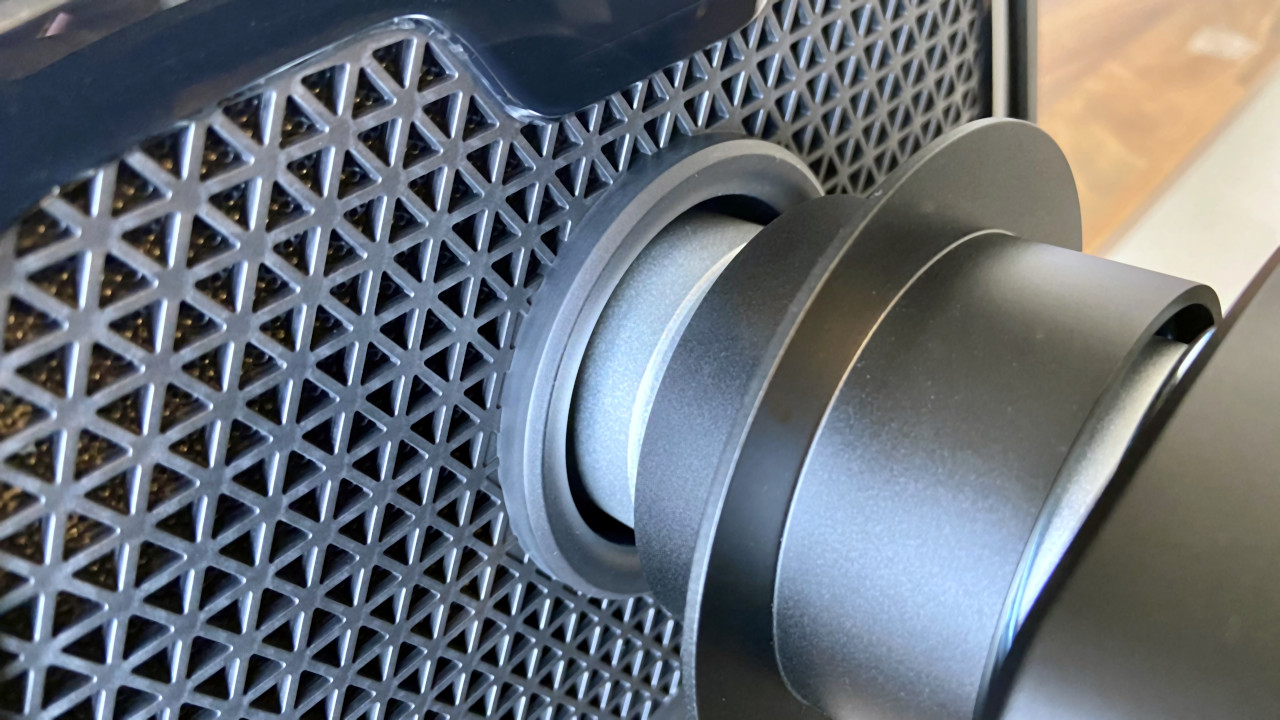
Logitech G is particularly proud of its quick-release mechanism on the PRO wheel, which I’m happy to say that it is laughably easy to use. Their boldest claim is that you could release it with one hand if you wanted to. Sure enough, with a pair of outstretched digits and your thumb on the wheel, the whole thing comes off with a simple squeeze on the lightweight mechanism.
The PRO wheel quick-release mechanism clicks firmly into place without any signs of wobble.
Fortunately, the simplicity of this quick release doesn’t ring any alarm bells for safety since the PRO wheel clicks firmly into place without any signs of wobble.
Nothing would cause the wheel to fall apart during gameplay accidentally, and the action to remove it is quite deliberate yet straightforward to achieve. Crucially, there’s a satisfying clunk when you make the proper connection without tightening any protruding screws. Although there have been no official comments on future product roadmaps, a quick-release mechanism implies replacement wheels could soon be on the horizon, so I’ll keep my fingers crossed.
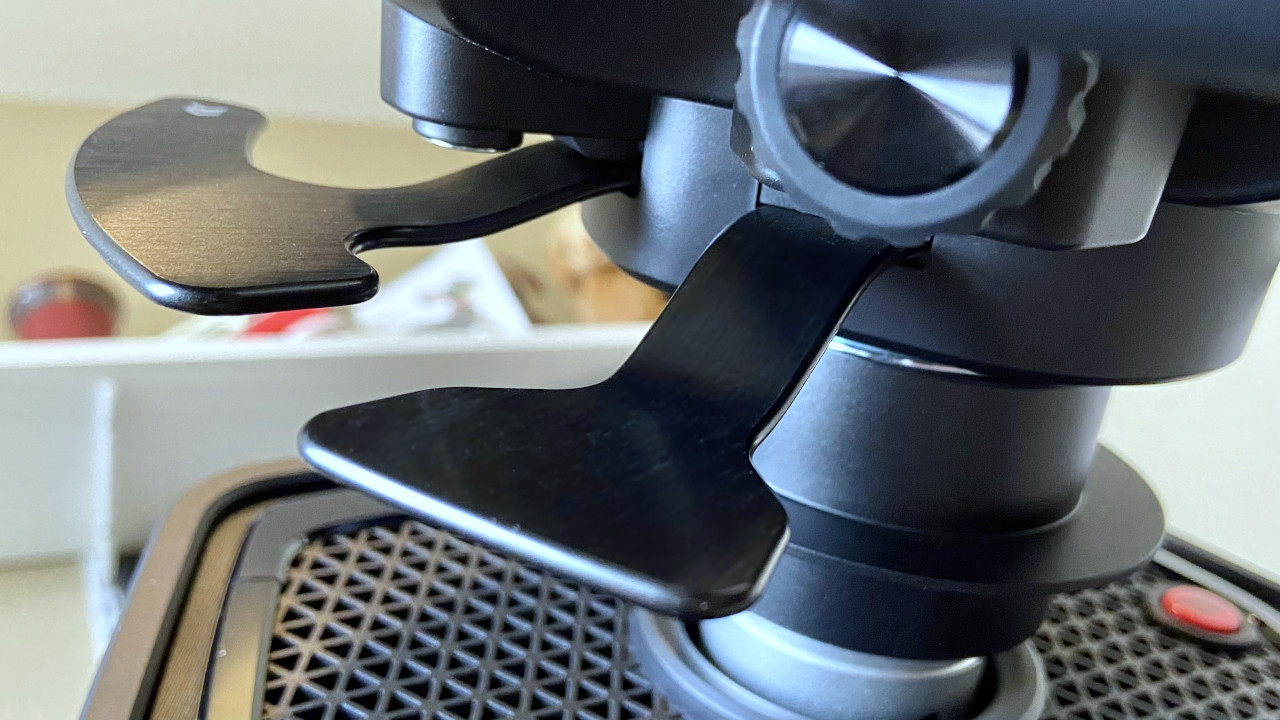
Two standard gear shifters sit behind the PRO wheel, using magnetic hall-effect sensors demonstrating chunky tactile feedback when pulled. They feel just about perfect and don’t get too loud during use. There are also a pair of clutch paddles underneath the shifters, both using an analog axis, which can be used for standard functions like launch control or re-mapped to the gas and brake for accessibility.
Considering how loud some Logitech racing wheels have been in the past, the physical buttons on the PRO wheel have struck a perfect balance of feedback and responsiveness. In the same customizable style, the on-wheel dials can be used for adjusting ABS, brake balance, and turbo, but you’re free to assign them to anything else.
Raised face buttons feature a glossy finish and are easy to find in a pinch. With a quadruple offering for shifters and as many buttons as you would find on a standard Xbox controller, you shouldn’t feel limited by the input options. The axis paddles proved particularly useful in more casual simulation games for moving the in-game camera just as much as I needed.
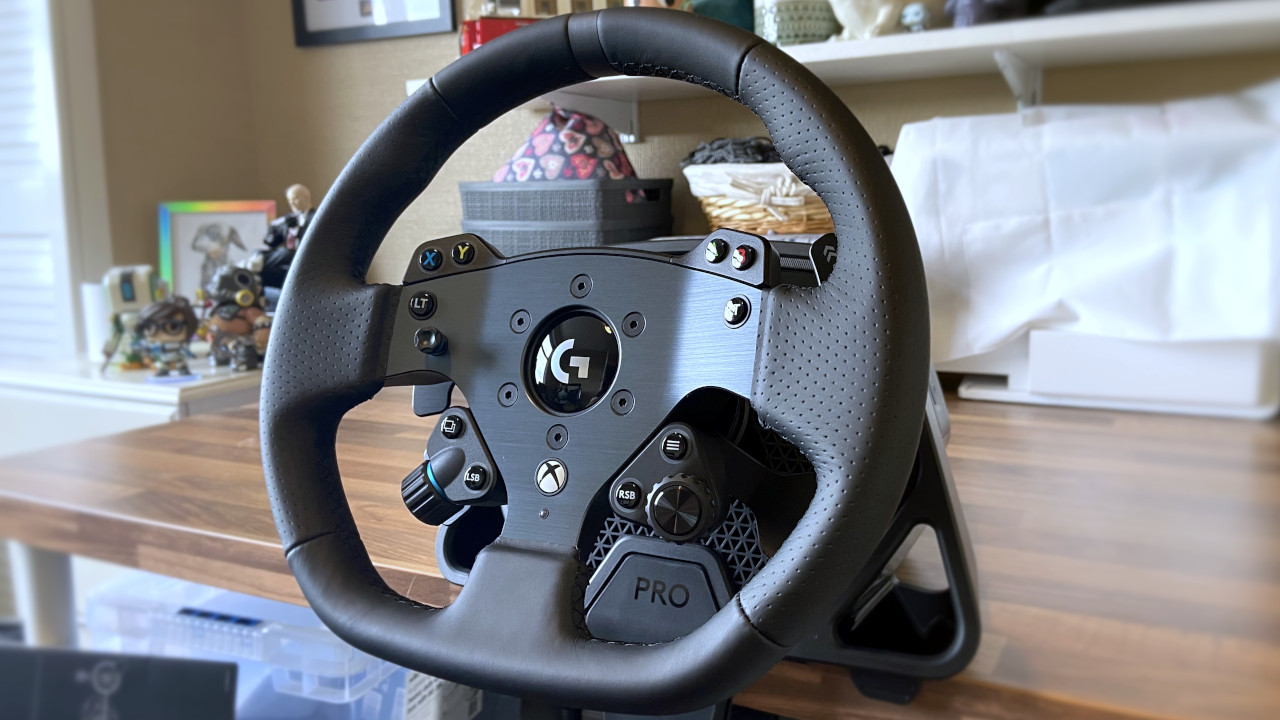
Firing up the PRO wheel and pedals with a selection of racing games on Xbox and PC showed an immediate and obvious superiority over the motor and belt-driven wheels that I’m used to. The powerful motor lurking inside is rated for up to 11Nm of torque. Instead of sticking with a round 10, I’d love to assume pushing to eleven is a not-so-subtle Spinal Tap reference rather than the result of a clever mathematical equation.
You can save settings for each game to one of the five available profile slots stored on the PRO wheel’s memory.
Searching for specific titles supporting Logitech’s Trueforce engine would provide the most accurate testing results. Although older titles still work with the included G923 compatibility mode, I wanted the complete experience.
Trueforce is Logitech’s in-house term for force feedback, featuring a report rate as low as 1ms on PC and consoles. A decent reduction from the usual 4-5ms seen on others, and the effects feel super smooth. Any games without official support fall back to feeling like an emulation of standard direct input feedback, so it’s worth the upgrade.
The official support page includes a helpful list of in-game settings to tweak for each title, and you can easily save each game to one of the five available profile slots stored on the PRO wheel’s memory. Going all-in with 11Nm of torque on Dirt Rally 2.0 was thrilling and, at times, terrifying.
Nothing throws you in at the deep end, like rally driving on rocky trails while slamming into opponents. Trueforce was putting so much momentum through the wheel that I came last in practically every race, laughing all the way. This direct drive wheel is a different monster to my daily driver, so I decided to dial the forces back a little at first.
Logitech claims many users tend not to use direct drive wheels to their full potential anyway, keeping to a 5-10Nm torque range, so I dropped the PRO wheel to 5Nm and switched things up with Forza Horizon 5 while I got the hang of it. It’s undoubtedly not a wheel for younger children to use without strict supervision, and Logitech G’s marketing strategy is appropriately aimed at those taking simulation seriously.
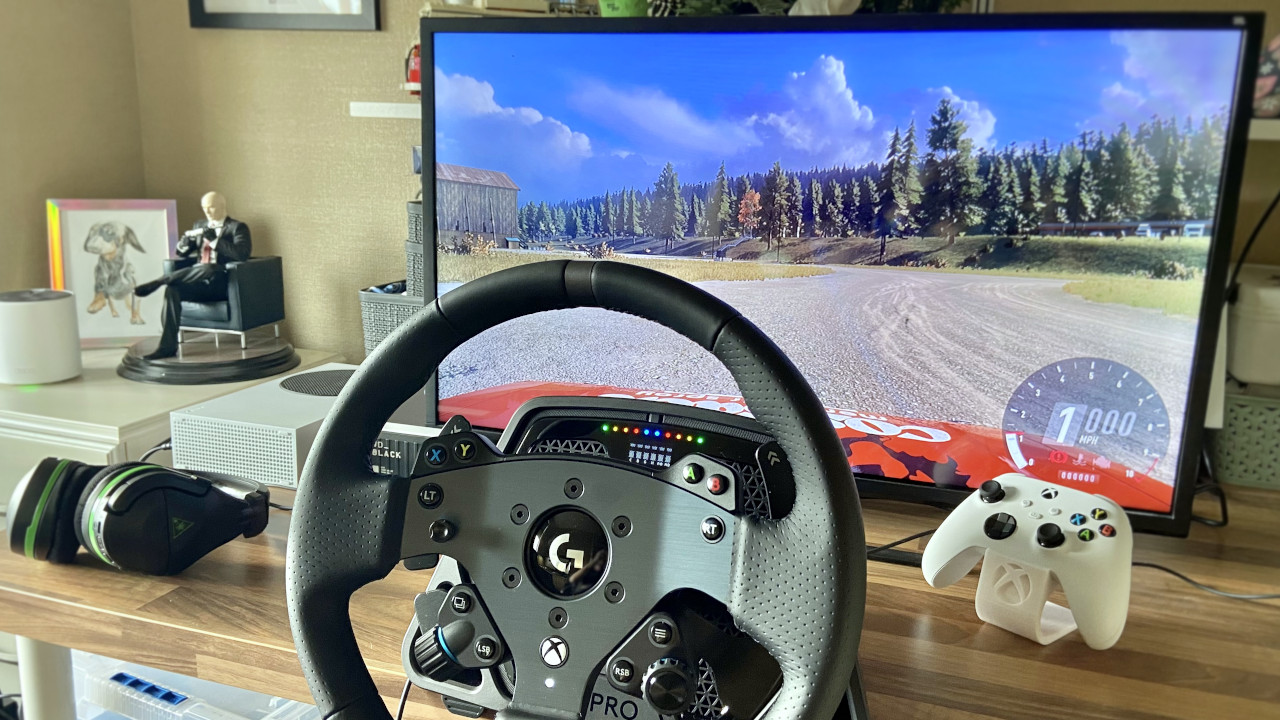
The OLED screen and dials make adjusting the PRO wheel so simple and give you plenty of customization options when playing on Xbox. Moving back up to 11Nm in stages allowed me to appreciate the intricacies of the direct drive motor. Feeling the traction control pulling hard before it finally snaps you into a tailspin is something I urge you to experience.
Firmware updates will allow future tweaks through the G Hub software, and support for Trueforce will likely come to more games in time. The PRO wheel is the most straightforward racing wheel I’ve ever set up and certainly the most powerful. In my opinion, this combination can justify its high price since Logitech G is genuinely offering something extra special for sim racing enthusiasts and brave newcomers.
Logitech G PRO: What you won’t like
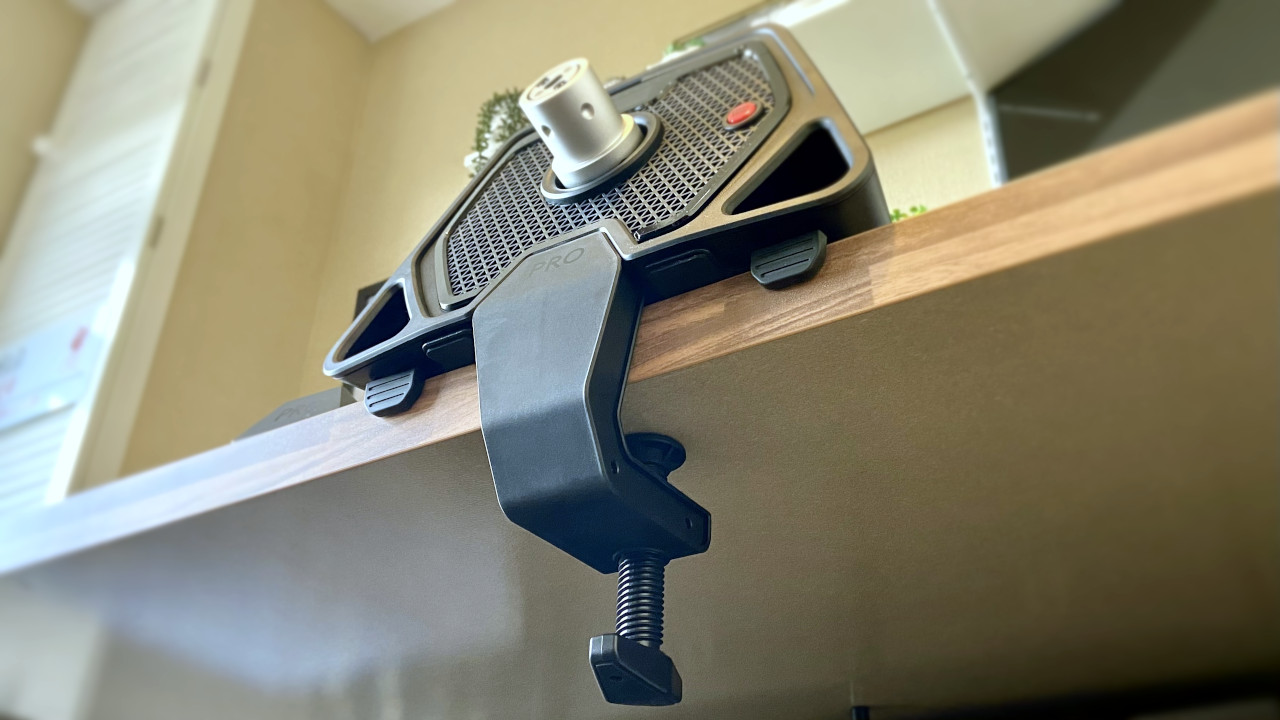
Keeping track of my thoughts while using the PRO wheel, I noticed I barely had anything negative to say about it besides the inclusion of a microscopic analog stick instead of a D-pad. What I did find was primarily trivial and unique to my setup. However, there are still some points worth mentioning when you’re debating whether or not to drop such a significant amount of money.
The inclusion of a table clamp mount is admirable, and I love that Logitech G still provides one with this high-end set, but it’s by far the worst way to use the PRO wheel. With all the Trueforce effects turned on and the torque set to the maximum 11Nm, the servo shook through my chunky desk and around the house. Your family and even neighbors would thank you for using a cockpit instead.
Naturally, you can scale down the feedback through the myriad of customization options on offer. Still, at this price point, you should expect to enjoy everything the PRO wheel offers without passing anything up due to a weak desk, so consider your options for a rig like the official Playseat Trophy collaboration with Logitech G.
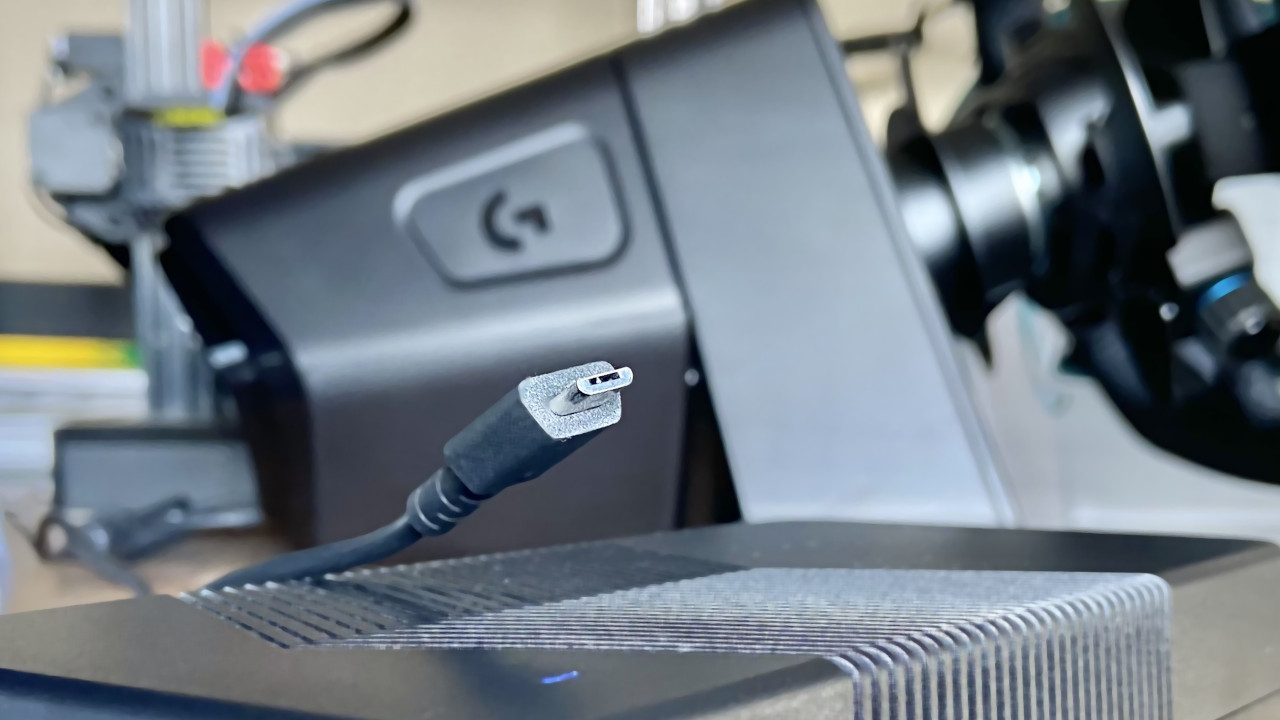
Unfortunately, the USB hub on the PRO wheel servo is proprietary, and there are no RJ12 ports for connecting rival pedal sets. Any accessories using standard 9-pin connectors won’t work at launch either. Logitech G tells us they plan to release a USB adapter in early 2023, allowing even the PRO pedals to be used with older wheels.
I would have preferred to see USB-C cables over the aging micro USB, but they do at least feature a shaped plastic jacket that fits snugly into the servo. It certainly helps with blindly plugging in the accessories if a cockpit obscures the rear of the wheel, but these connectors are old news.
Two plastic alignment lips at the front of the servo can prevent it from adequately aligning with some cockpit plates, so check your setup first. Past that, only the D-shaped wheel might upset some drifting enthusiasts, but it’s not as obtuse as some alternatives. Should the future lead to different wheel variations, this could be remedied at an additional cost.
Logitech G PRO: The competition
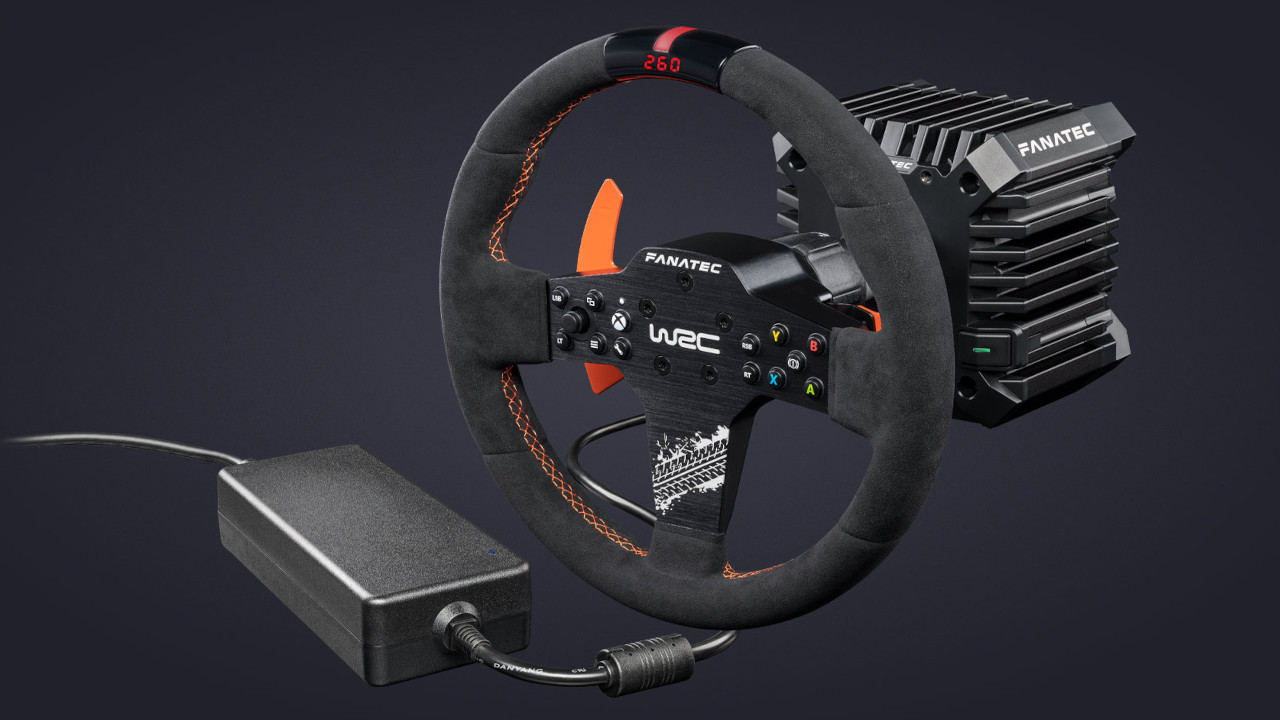
The Logitech G PRO racing wheel is undoubtedly the best-looking direct drive base, but it’s not the strongest for torque or most versatile for interchangeable wheels right now. If you’re looking for similar sets, there’s no doubt you’ve seen the Fanatec brand name pop up.
They’re arguably Logitech’s strongest rival in this category, and while their wheels look the part, the servo designs are a little boring and industrial. Fanatec usually sells its parts separately, but they do offer combination packages. Finding a perfect match for the PRO wheel isn’t a simple task, but some come close.
The Fanatec CSL DD WRC racing wheel sells for around $700. It’s compatible with Xbox and PC, packaged with their Elite wheel in a rally styling, and the CSL DD servo is rated for 8Nm of torque. An LED screen is built into the wheel, allowing for adjustments during gameplay, just like the Logitech G PRO, and the servo base offers more connectivity options.
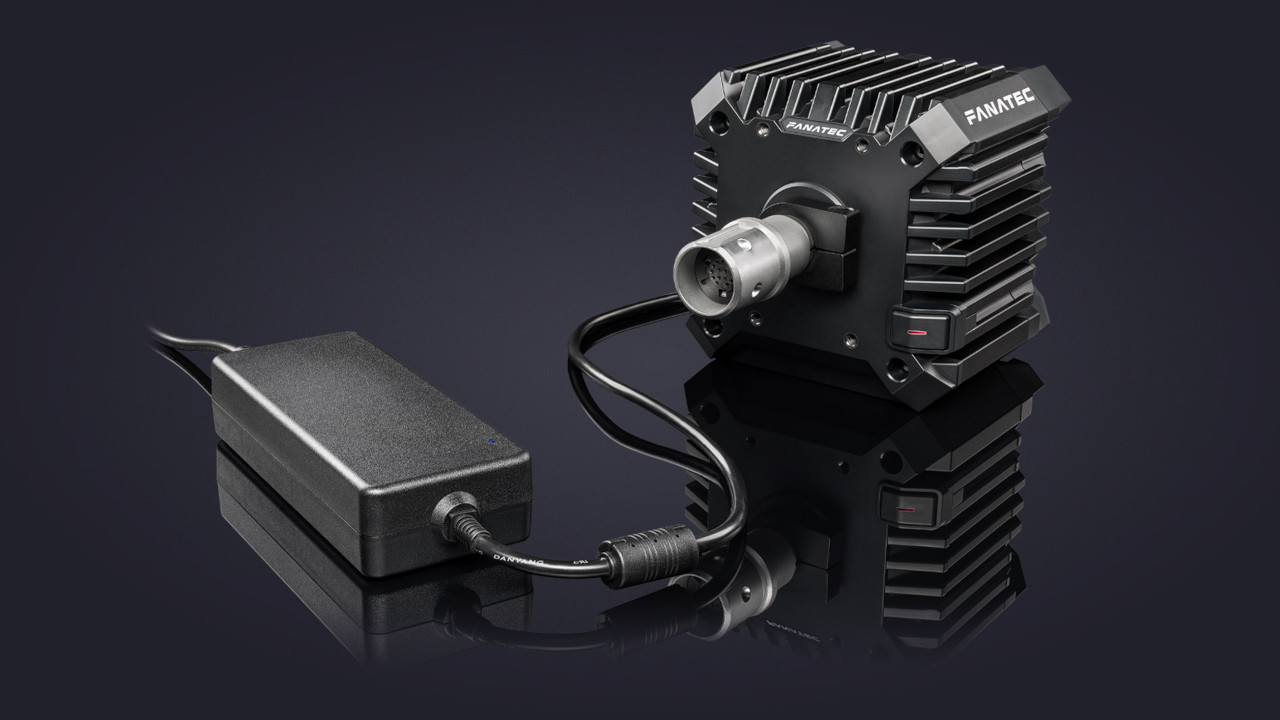
You could buy the Fanatec DD1 servo on its own and enjoy up to 20Nm of torque alongside its OLED display, but you’re asked for around $1,200 before even choosing a wheel. The cheaper CSL DD comes in two variations at 5Nm and 8Nm for about $350 and $500, respectively, which would come closer to Logitech’s price point when you add a wheel, but the power doesn’t compare.
Logitech G offers a fantastic bundle when you break it down, making the price feel less of a sting and more of a fair ask. Its balance of simplicity and premium quality makes it the most accessible direct drive wheel for enthusiasts and newcomers to approach, and I’d wager it could stand tall next to almost anything you’re considering as an alternative.
Logitech G PRO: Should you buy?
You should buy this if …
- You want an uncomplicated direct drive wheel.
- You want a personalized sim racing experience.
- You have a compatible cockpit rig.
You shouldn’t buy this if …
- You want a choice of interchangeable racing wheels.
- You mount wheel bases on a thin, lightweight desk.
- You use third-party pedals or accessories.
Direct drive racing wheels are currently the king of sim racing, removing all obstacles between you and your game of choice. The powerful motor inside the Logitech G PRO wheel, alongside the Trueforce feedback engine, provides a level of stunning realism that I’ve never felt before. If you can handle up to the maximum 11Nm of torque, it’s genuinely hair-raising.
I can’t recommend anyone mount it to a desk if planning to crank the effects to their maximum unless you want your monitors to be thrown off. Stick with a sturdy cockpit rig and find somewhere discreet to hide the gigantic power supply, then enjoy what is easily one of the best racing wheels for Xbox Series X|S I’ve ever seen.



